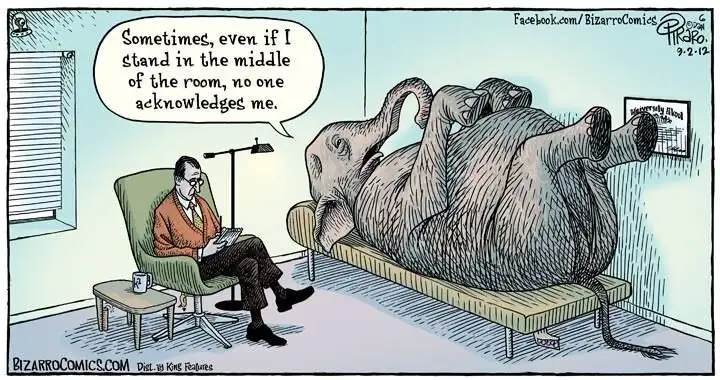#TheBestWayBulletin | Tudor Cojocariu | LID Moldova expert & Talent Account Executive LinkedIn [29.09.2022]
Two recent surveys show two sides of the same coin: workers are enthusiastic when it comes to work from home, managers not so much.
One survey conducted by SD Worx, revealed that 61% of employees consider themselves to be more efficient while teleworking; while the other one conducted by Microsoft mentioned that 87% of workers felt they worked equally, or more, efficiently from home.
Looking back to March 2021, a survey conducted by the European Foundation for the Improvement of Living and Working Conditions (Eurofound) revealed that 60% of workers would like to work from home (telework) daily or several times a week after the pandemic. Interestingly, half of these respondents would have preferred to telework part of the time after the pandemic rather than do so exclusively.
These respondents were then describing what we are now calling “a hybrid model” – a concept which has become mainstream. The same European body published a recommendation in September for the employers to support hybrid workplaces as a new way of working. Its authors stressed that the shift to remote work will continue in the coming years because of further technological and societal changes. Apart from the remarkable similarity in figures between these three different studies, conducted by different organisations, it’s worth observing most employees’ preferences towards teleworking even since before the pandemic.
Source: Insights from LinkedIn
Most often, the main reasons why employees are happy with teleworking are the following: they are more productive, less stressed, have a better work-personal life balance, save time and costs on commuting, eating (outside of their homes), and living (close to the central offices). Additionally, they can interact more easily without taking company hierarchy into account and feel that they contribute to reducing pollution.
There are alternative surveys too, talking about slightly different motivations, like caring for kids and/or pets, listening to music while working, the possibility to work out or nap, and so on. But, then again, why not, if all these factors help employees get their job done, right? Well, maybe.
Managers are aware of the above, but some still see things differently
We are now at the stage when things settled down and new habits have formed. Most probably, inertia and time are favourable to employees’ expectations at this point. This reality makes it potentially problematic for those who would oppose it for whatever reason.
For some managers, for example, who appear to be nurturing feelings of reluctance towards teleworking, as illustrated by a Microsoft survey which questioned 20,000 staff across 11 countries. The authors affirmed that 80% of managers consider that their teams are more efficient while working from the office.
One rather controversial case was that of a cabinet minister who implied that work cannot be done properly from outside the office. In another instance, the owner of a huge company sent out an email to his staff saying “if you don’t show up, we will assume you have resigned.” Other employers argued that it would be only fair if working from home came along with a decrease in salary.
Figures as the ones above may come as surprising and could make one question how business can continue to exist with such a deep divide in opinion. Freedom of choice is essential for employees. The same goes for managers, since they are also employees, and most of them have their own bosses. The threat of eliminating choice has historically led to life-altering events in many parts of the world. It’s a fact.
Like most social phenomena, teleworking came into being suddenly, and it has empowered workers to do things their way, while leveraging their own views about how their jobs need to be done, without sacrificing their employers’ business targets and productivity. On the contrary, boosting them. It stirred up some latent anguish for both parties, and this must be now managed in a constructive manner.
For managers, could it be a fear of missing out? Or a desire to retain control over employees and processes? Whatever it is about, teleworking with its freedom of choice and control seems like one big elephant sitting awkwardly in the middle of the conference room, waiting to be acknowledged. Ideally through empathy, courage, and honesty.
Resistance to adapt can damage the business
Numerous companies were and are having debates, sometimes possibly frictions between managers and employees with the latter trying to advocate their right (as it was framed by some government leaders) to telework. This was a reason for disagreements between staff and management in one of my previous workplaces, too.
The main issue was that most of the staff got their jobs during the peak of pandemic, when they had to stick to a limited movement area around their household and when working from home was compulsory. Teleworking was one of the attractive bits for young sales professionals who had to reorient from working on site in SMEs or retail, sectors so hardly hit by the lockdowns. Immediately after the first relaxation around the end of 2021, as soon it was not forbidden to work from the office, the management announced that everyone should return to the office fulltime. No exceptions allowed.
Three tough months of negotiation attempts followed, during which parties’ stance on the matter did not change. No arguments brought by staff mattered during this collective dispute: the increased productivity, record-level revenue generated, 90% of the employees preferring teleworking, or contributing to company’s green-goals (teleworking could potentially be greener, as research shows).
Consequently, dozens of workers left the company (or even the country) after not being left with any choice. The others returned to the office unenthusiastically. Most of them never saw the offices to which they supposedly had to return. During the next 5 months or so the project closed all together. Quod erat demonstrandum.
It’s one of the many examples which prove that what was not so long ago seen as a hip benefit, is now seen as an intrinsic part of any hiring package. At least in the knowledge industry, or in any other industry where technology allows teleworking. The employers not willing to adapt will probably face challenges in hiring good talent and retaining those already employed, as the Tech Talent Outlook research shows.
For those who understand that remote and hybrid work are here to stay, LinkedIn embraced this change and has added the Workplaces filter on the platform, facilitating a direct matching between employers and employees who are open to remote work.
From exotic perk to must-have benefit
Indeed, before the pandemic, working remotely was regarded as something of an exotic perk mainly available to tech workers. According to Ryan Roslansky, LinkedIn’s CEO, only 2% of the around 15 million jobs on the platform involved working remotely before the pandemic. Some months ago, that stood at 20%, and it has since come down to 15% this month.
Going back to one of Eurofound’s conclusions, companies initially saw that, by enabling telework, businesses potentially benefit from increases in productivity and the ability to attract highly qualified workers for whom telework is an important aspect of the job.
We are in the middle of a (re)shift of work and teleworking it is at the centre. Enormous amounts of effort to adapt to the “new digital normal” have been made during these two and a half years by companies. Especially by those companies who value their employees, have a culture which is embraced by most of them, and are willing to prevent such phenomena as attrition.
Source: LinkedIn Employer Value Propositions Survey between July 2020 – June 2021 (Tech Talent in this sample)
If one thing matters when it comes to attrition, then it’s company culture. According to a piece of global research carried out by McKinsey last year during the “great resigning”, some of the most important reasons cited by employees when resigning included not feeling valued by the organization, not being valued by their manager, and not feeling that they belonged at their organization.
If we look at the workspace as part of the company culture, then teleworking is a big part of the workplace discussion. That’s because, in essence, it grants workers the ability to define, choose and control their own workspace. No wonder flexible work arrangements and good work-life balance are often cited as among the top three employer value propositions for knowledge industry talent alongside compensation and benefits. Simply put, teleworking can drive talent retention. And this is something that any manager or business owner should/would value.
Greyer at a second sight
There are plenty of reasons to believe that the debate around remote working will not end soon, the main three being the following.
The right to disconnect. According to the EU Labour Force Survey, we’ve witnessed an increase in teleworking: +11% in 2019; +18% in 2020; +22% in 2021. The dynamics were there even before the pandemic erupted, although the COVID-19 crisis accelerated the process. This has led to remote employees clocking up more hours than office-only workers. What’s more, this increase is associated with employees working atypical or unsocial hours, often including unpaid overtime. Employees’ right to disconnect needs to be protected, regardless of whether while working from the office or from elsewhere.
This is a right which has been covered by national legislation in some cases, like that of Ireland. But there is a long way until codes of practices become an applied reality, including because teleworking can often be a pitfall in which many of us step into whenever sacrificing personal life on the altar of getting things done at whatever cost. And it’s inevitably so much harder to set clear boundaries and disconnect when work time and personal time intertwine.
Career growth. For some categories (junior employees, for instance), being isolated from the action can become a big problem. This can negatively impact their integration into their new teams and worsen their struggle to make themselves noticed with peers, managers, or clients; thus, decreasing their chance to grow professionally.
Mental health. Research conducted by the American Psychiatric Association revealed that majority of employees working from home experienced negative mental health impacts, including isolation, loneliness and difficulty getting away from work at the end of the day. Young people living alone are generally the first to fall victim to this side-effect. This is seen, by the way, as one of the reasons why post-pandemic office spaces are so full of positive buzz and energy these days.
Furthermore, the way employers are dealing with this mental health risk is not always ideal, as exemplified by the finding that four in ten employees (young ones especially) are concerned about retaliation if they seek mental health care or take time off for their mental health.
You can’t build anything durable with a stranger
This is an idea I recently heard from one of our senior leaders here at LinkedIn during a hybrid work event. It sounded so simple, and yet so meaningful, and it made me acknowledge that there is more to this new hybrid normal we are experiencing currently. Because it involves choices for all stakeholders, it implies shared control, and it allows so much flexibility.
Connecting with our immediate colleagues and nourishing valuable relationships which have every chance to become friendships is something that many of us, including myself, are still rediscovering. It has been 29 weary months and we are experiencing tough times with wars and energy crisis affecting our lives. Thus, taking the time to listen more as either managers, or employees is more important than ever.
Taking the above into consideration, hybrid could look like the answer to the current divide between managers and employees on teleworking.
What are your thoughts?
Featured photo source: Jason Goodman, Unsplash






